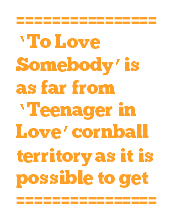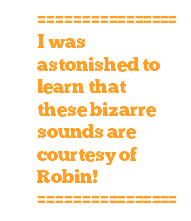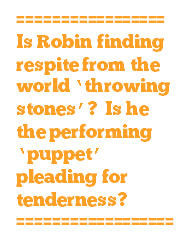The brothers were lucky when they came to England from Australia in early 1967. Not only was London in full swing but pop was taking on a range of new and exotic influences from medieval minstrelsy to mellotrons, ragas to Victoriana.
Much of this found its way into the Bee Gees’ music. That was nothing unusual, it was what a lot of bands were doing at the time – absorbing, adapting and adapting again. But when these influences combined with the brothers’ distinctive harmonising talents – honed over a decade of performing live – and their solidly melodic songwriting, the results were amongst the most solid yet engaging of the psychedelic pop genre.
Bee Gees 1st marked the beginning of a sustained campaign which kept the brothers’ Gibb in the charts throughout the remainder of the 60s, consistently balancing discipline with flair, accessibility with a desire to grow and change.
Ear to the zeitgeist
Some would say 1st is the Bee Gees’ strongest album and it’s not hard to hear why. Their ear-to-the-zeitgeist is evident everywhere: the Edwardian toytown pop of Turn of the Century, the fairytale swirl of Red Chair, Fade Away and the bendy monastic weirdness of Every Christian Lionhearted Man Will Show You. As the 60s progress, the psychedelic trimmings gradually fall by the wayside but here they’re in full flight and put across with a confidence and, as always, terrific melodic ease.
They play with structure too, not just for the sake of it, but in a way which shows genuine musical understanding: listen to Robin’s sudden operatic digression taking Close Another Door to a whole other level and psychedelia triumphing over pop to bring an inventive fade to I Close My Eyes.
Startling soulfulness
And then there’s their soulfulness. It’s startling just how fully formed were the brothers’ soul credentials even at this early stage and indeed soul forms the often underappreciated alternative arm of Bee Gees 1st. There is incredible emotion in Robin’s vocals for I Can’t See Nobody – and that’s before you even get to Nina Simone’s cover. And how To Love Somebody was so undervalued at the time is a mystery: what an utterly consummate pop ballad.
Interestingly, the album’s programming accentuates the psychedelia/ soul division with all the baroque pop/psychedelic tracks (bar Cucumber Castle) placed on side one and side two showing a definite leaning towards soul as well as a greater group feel.
Folk, Beatlesque pop art, cute whimsy, medieval psychedelic drones, soul ballads – beneath the genre hopping and sometime Craise Finton cheekiness these brothers simply write great pop music.
Bee Gees 1st sets out their stall and proves that they are songwriters to watch and be reckoned with.

Bee Gees 1st [1967]
Side 1
Turn of the Century
Holiday
Red Chair, Fade Away
One Minute Woman
In My Own Time
Every Christian Lion Hearted Man Will Show You
Craise Finton Kirk Royal Academy of Arts
Side 2
New York Mining Disaster 1941
Cucumber Castle
To Love Somebody
I Close My Eyes
I Can’t See Nobody
Please Read Me
Close Another Door
Singles 1967 [related to Bee Gees 1st]
New York Mining Disaster 1941
I Can’t See Nobody
To Love Somebody
Close Another Door
Holiday
Every Christian Lion Hearted Man Will Show You
Unreleased 1967
Gilbert Green*
House of Lords*
I’ve Got to Learn*
All Around My Clock*
Mr Waller’s Wailing Wall*
* released on Bee Gees 1st Rhino reissue, 2006
Other artists 1967
Adam Faith – Cowman Milk Your Cow


 Carnabetian, theatrical, neo-Victorian Englishness (‘sitting eating hot cross buns…’) swapping the latter’s forced merriment for the odd thrown in moment of arch sarcastic disregard (‘thousand suckers every one’.)
Carnabetian, theatrical, neo-Victorian Englishness (‘sitting eating hot cross buns…’) swapping the latter’s forced merriment for the odd thrown in moment of arch sarcastic disregard (‘thousand suckers every one’.) gathering climax in the lead-up to each burst of chorus and then that engaging percussive triplet pulse between each ‘To love somebody…. To love somebody… the way that I love you.’ Although, taken overall, these inevitably lend the recording a lushness (which is, I think, what its detractors dislike), each touch is applied with such precision and expertise that without them the song would simply be lacking not just in sonic richness but emotional impact.
gathering climax in the lead-up to each burst of chorus and then that engaging percussive triplet pulse between each ‘To love somebody…. To love somebody… the way that I love you.’ Although, taken overall, these inevitably lend the recording a lushness (which is, I think, what its detractors dislike), each touch is applied with such precision and expertise that without them the song would simply be lacking not just in sonic richness but emotional impact. unfolds.
unfolds. story The Three Billy Goats Gruff, perhaps?) Assuming the bleats to have been added sound effects, upon reading Andrew Sandoval’s Bee Gees: The Day-By-Day Story, I was astonished to learn that these bizarre sounds are courtesy of Robin!*
story The Three Billy Goats Gruff, perhaps?) Assuming the bleats to have been added sound effects, upon reading Andrew Sandoval’s Bee Gees: The Day-By-Day Story, I was astonished to learn that these bizarre sounds are courtesy of Robin!* all lyrics need do is simply describe what is there. In a sense, ‘Holiday’ does this, stating the obvious with lines like ‘…the puppet makes you smile, if not then you’re throwing stones’ – yet remains inscrutable nonetheless.
all lyrics need do is simply describe what is there. In a sense, ‘Holiday’ does this, stating the obvious with lines like ‘…the puppet makes you smile, if not then you’re throwing stones’ – yet remains inscrutable nonetheless.